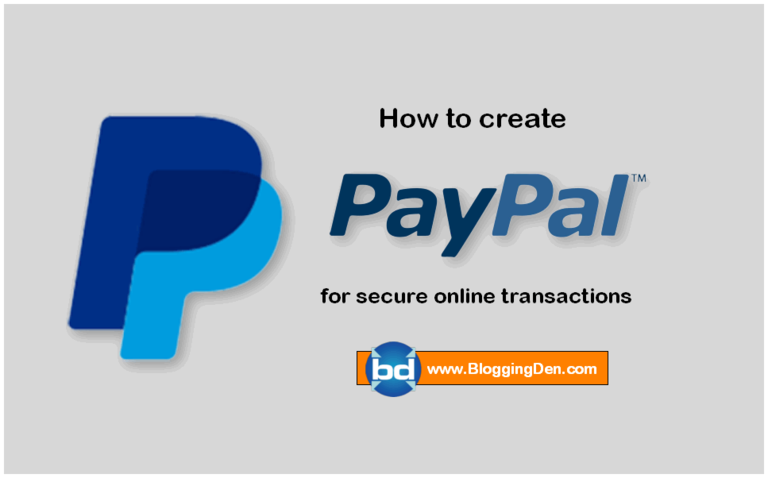Are you wondering how to make money blogging in 2025? You’re not alone. Blogging is no longer just a creative outlet. It’s a powerful way to earn passive income. You can build a personal brand. You can even turn your blog into a full-time business.
With millions of people searching for trustworthy content every day, there’s never been a better time to monetize your blog.
You could be a beginner starting your very first blog. You might be an experienced writer looking to boost revenue. Either way, this guide will help you. It will walk you through 12 proven blog monetization strategies that work right now.
You will learn actionable tips from affiliate marketing and display ads. You will also learn about creating digital products. Additionally, the guide offers tips for offering premium memberships to grow your income step by step.

By the end of this guide, you’ll have a clear roadmap to turn your blog into a profitable online business. You will also have tools and real-life examples. Additionally, there is a downloadable checklist to help you take action.
Why Blogging is Still a Profitable Business in 2025
If you’re wondering, “Is blogging still a good way to make money in 2025?”, the short answer is yes — absolutely! Blogging remains one of the most profitable and sustainable ways to build passive income online. While the digital landscape has evolved, blogs continue to thrive because people are always searching for helpful, trustworthy content.
Blogging Trends and Growth
- Content consumption is at an all-time high: According to recent studies, over 77% of internet users regularly read blogs. This number keeps rising. People turn to blogs for tutorials, product reviews, and inspiration.
- Diversified income streams: Bloggers aren’t limited to ads anymore. They earn through affiliate marketing, online courses, sponsorships, memberships, and digital products.
- Global audience reach: With SEO, social media, and AI-driven tools, new bloggers can easily connect with a global audience. They can reach their audience faster than ever before.
Blogging as a Passive Income Source
Blogging stands out because it allows creators to earn money passively. Once you publish a blog post, it can generate traffic and revenue for months or even years with minimal updates. This is why many bloggers treat their sites as digital assets — something that appreciates over time.
The Business Potential of Blogging
The blogging industry has grown into a multi-billion-dollar sector. Top bloggers earn six-figure incomes annually, and even small niche bloggers can bring in a steady stream of side income. With low startup costs (as little as $50/year for hosting), blogging offers one of the highest ROI opportunities for creators.
In 2025, blogging is no longer “just a hobby.” It’s a serious business model. When paired with smart SEO, audience engagement, and monetization strategies, it can become a reliable passive income blogging system.
12 Proven Ways to Make Money Blogging in 2025
If you’re serious about turning your blog into a profitable online business, you’ll love this section. In 2025, bloggers have more opportunities than ever to monetize a blog. Traditional methods include ads and affiliate marketing. High-income streams involve online courses, memberships, and brand sponsorship.
The best part? Many of these strategies can generate passive income. This means your blog continues to earn for you long after you hit “publish.”
Whether you’re a beginner learning how to make money blogging, or someone looking to scale. These 12 proven blog monetization strategies will help you diversify your income. They will also help you build a sustainable business.
Let’s break down each method step by step. This way, you can choose what works best for your niche. Consider your audience and goals as well.
1. Display Advertising
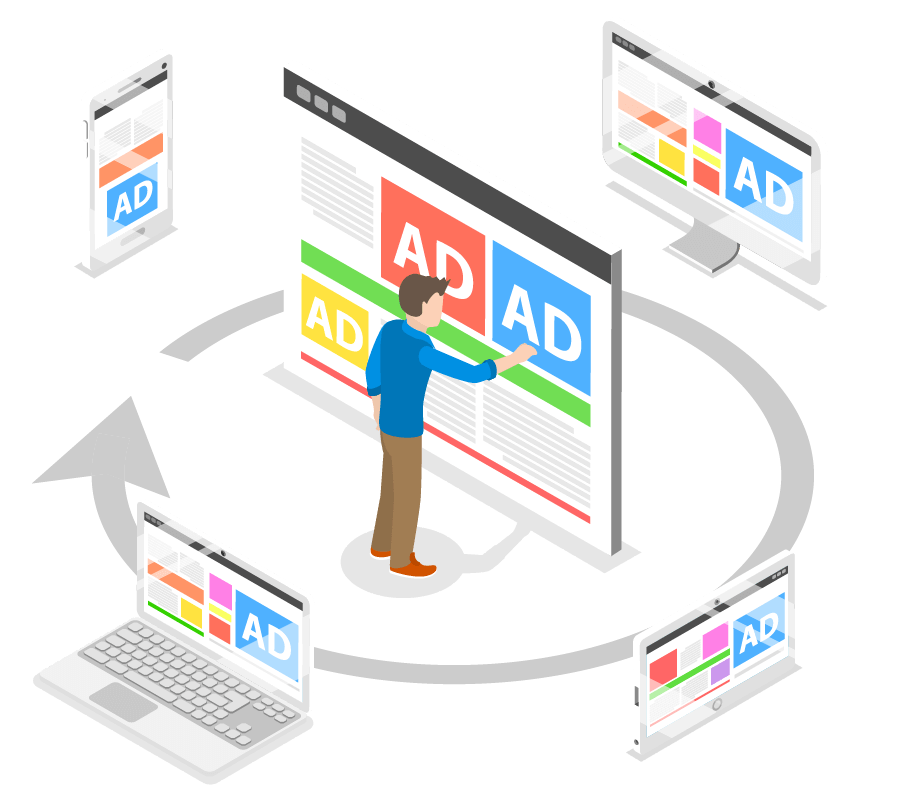
One of the simplest ways to make money blogging with ads is through display advertising.
This monetization strategy involves placing ads on your blog, and you earn money whenever readers view or click them. It’s a beginner-friendly method because you don’t need to create products or services—just focus on driving traffic.
How It Works and Recommended Ad Networks
- Google AdSense: The most popular ad network for new bloggers. Once approved, you can easily display contextual ads across your site.
- Ezoic: A great alternative with AI-driven ad placements that help maximize revenue.
- Mediavine: A premium ad network requiring at least 50,000 sessions/month; ideal for established bloggers looking for higher RPMs.
- AdThrive: Perfect for high-traffic bloggers (100,000+ monthly pageviews) who want premium advertisers.
To get started, sign up for an ad network. Insert the ad code or use a plugin. Start earning from impressions and clicks.
PROS
- This is very easy to set up for beginners.
- It provides passive income once you have consistent traffic.
- It works across most niches, from lifestyle to tech.
CONS
- Requires significant traffic (10,000+ monthly pageviews) to make decent money.
- Ads can slow down your site or create a poor user experience if not optimized.
- Revenue per click is often low, especially in competitive niches.
Income Potential for Beginners
New bloggers with around 10,000 monthly views can expect $20–$50/month with AdSense. Using premium networks like Mediavine or AdThrive can significantly boost earnings. You can earn $15–$30 per 1,000 sessions. The actual earnings depend on your niche and audience demographics.
Pro Tip: If you’re just starting, focus on creating SEO-rich, evergreen content to grow traffic first. Once you hit a traffic milestone, switch to a higher-paying ad network for better returns.
Recommended readings
- How to apply for Google Adsense approval?
- How to find Google adsense High CPC keywords?
- Best Google AdSense alternatives for bloggers
2. Affiliate Marketing

Affiliate marketing is one of the most profitable blog monetization strategies for both beginners and seasoned bloggers.
Instead of displaying ads, you promote products through unique affiliate links.
You earn a commission for every sale, lead, or action generated through your blog.
Choosing Affiliate Programs
To succeed, pick affiliate programs that align with your blog’s niche and audience:
- Amazon Associates: Ideal for beginners, offering a vast product selection and easy integration.
- SaaS Programs: High-paying software tools like web hosting, SEO software, and marketing platforms often offer commissions of 30–70% per sale.
- Niche-Specific Programs: These work well if your audience is highly targeted (e.g., fitness supplements, pet care products, or photography equipment).
Pro Tip: Always choose products you genuinely recommend to build audience trust.
Strategies to Increase Conversions
- Create in-depth product reviews and tutorials.
- Write comparison guides (e.g., “Best Web Hosting for Bloggers in 2025”).
- Use SEO-optimized content to target buyer-intent keywords like “best,” “review,” or “vs.”
- Build an email list and share affiliate offers with engaged subscribers.
- Add call-to-action (CTA) buttons to drive clicks.
Tools to Manage Affiliate Links
- ThirstyAffiliates: A popular WordPress plugin for link cloaking, tracking, and managing affiliate links.
- Pretty Links: It is a simple WordPress plugin and a simple alternative for link management and tracking.
- Premium Link Shortner (PHP Script): Install this script with new domain name (or) install in your running domain as subdomain. It helps you track the affiliate links as super professional short links. It is a premium tool that helps create easy to read affiliate links and optimize links for higher conversions.
How Do Bloggers Earn Money with Affiliate Marketing?
Bloggers earn money by recommending relevant products and inserting affiliate links in blog posts, emails, and social media posts. Readers purchase through these links.
Bloggers then earn a commission. The commission ranges from 3% on physical products (like Amazon) to 70%+ for digital products and SaaS tools.
Pro Tip: Start with evergreen content. Examples include “Best Tools” or “How-To Guides.” These consistently bring in traffic and generate affiliate income year after year.
Additional readings
- What is Affiliate Marketing and how it works for bloggers.
- Best Affiliate Marketing Platforms for Beginners
- Best Blog Niches for Affiliate Marketing
3. Sponsored Blog Posts & Brand Collaborations

Your blog will attract more brands as it grows in authority and traffic. Brands will pay you to feature their products or services in your content.
Sponsored blog content offers an excellent opportunity to diversify your income.
This is particularly true if you’ve built a loyal audience in a niche.
Pitching Brands and Setting Rates
You don’t have to wait for brands to approach you—proactively pitch your services. Here’s how:
- Create a Media Kit: Include your blog’s traffic stats, audience demographics, niche, and engagement rates.
- Find Brands That Align with Your Audience: Reach out to companies whose products your readers would value.
- Set Your Rates: Pricing depends on traffic, niche authority, and deliverables. Beginners often charge $50–$250 per post, while established bloggers can earn $500–$5,000+ per collaboration.
- Use Influencer Platforms: Websites like AspireIQ, Collabor8, and Upfluence can connect bloggers with brands seeking partnerships.
Pro Tip: Start with smaller brands or startups to build your portfolio, then scale to larger partnerships.
Best Practices for Disclosure
Transparency builds trust. Follow FTC guidelines by clearly labeling sponsored blog content:
- Use disclaimers like “This post is sponsored by [Brand Name]” at the beginning of the article.
- Mark affiliate or sponsored links using “rel=sponsored” or “nofollow” attributes.
- Maintain authenticity—always share honest opinions, even in sponsored posts.
Why Sponsored Blog Content Works
- High ROI for Bloggers: Brands are willing to pay for exposure to your targeted audience.
- Evergreen Earnings Potential: Sponsored content stays on your site and continues to drive traffic over time.
- Brand Authority: Collaborations with well-known companies can elevate your blog’s reputation.
Pro Tip: Pair sponsored blog posts with social media posts and promotions. Use platforms like Instagram, LinkedIn, or Pinterest. This strategy will increase your value and help you command higher rates.
4. Sell Your Own Digital Products

One of the most profitable ways to make money blogging is by creating and selling your own digital products.
Unlike display ads or affiliate marketing, you earn a percentage with those methods.
Digital products allow you to keep 100% of the profits. Additionally, they help you build your authority in your niche.
Types of Digital Products You Can Create
You don’t need a huge following to succeed—what matters is solving your audience’s problems. Some popular options include:
- eBooks: Write in-depth guides or niche-specific books.
- Templates & Printables: Planners, checklists, spreadsheets, and social media templates sell well.
- Online Courses: Offer step-by-step video lessons to teach a skill.
- Membership Content: Exclusive paid newsletters, premium tutorials, or community access.
Pro Tip: Start small with a low-cost product. Try an ebook or a printable to test your audience’s interest. Then, scale to higher-priced products.
Example Pricing Models
Your pricing should reflect the value you provide and your niche’s spending habits:
- eBooks: $9–$29
- Templates or Printables: $5–$50
- Mini-Courses: $50–$200
- Premium Courses or Memberships: $200–$1,000+
By using tools like Gumroad, SendOwl, or Podia, you can set up sales pages. These tools allow you to deliver products automatically. You can also collect payments without needing advanced tech skills.
Why Digital Products Are a Smart Choice
- High-Profit Margins: No inventory or shipping costs.
- Evergreen Sales: Once created, digital products generate passive income over time.
- Authority Building: Selling educational resources positions you as an expert.
Pro Tip: Combine SEO strategies and email marketing to drive consistent sales of your digital products.
5. Online Courses & Membership Sites

If you want to monetize a blog with courses, create premium learning content. It is one of the most scalable income streams for bloggers.
This courses and memberships give you complete control over pricing. They also allow you to maximize profits while positioning you as an authority in your niche.
Why Courses and Memberships Work So Well
Your blog already attracts readers looking for solutions. Turning that content into step-by-step lessons can deliver even more value. You can also provide exclusive membership perks. People are willing to pay for structured learning experiences and personalized access to your expertise.
Platforms to Launch Courses and Memberships
You don’t need complex tech skills to start. Popular platforms make it easy to upload content, manage students, and collect payments:
- Teachable: Beginner-friendly with drag-and-drop course creation.
- Kajabi: An all-in-one solution for course hosting, marketing, and sales funnels.
- Podia: Great for bundling courses, memberships, and digital downloads.
Membership Site Ideas
Membership sites provide recurring income by offering:
- Weekly or monthly exclusive articles and tutorials
- Live Q&A sessions or group coaching calls
- Private community access (Discord, Slack, or forum)
- Downloadable templates and premium resources
Income Potential
Bloggers charge anywhere from $50 to $500+ per course and $10–$50/month for memberships. With even 100 loyal members, a $20/month membership can generate $2,000/month in recurring revenue.
Pro Tip: Start small. Offer a mini-course or a low-cost membership. These options help to build trust. Then expand to high-ticket offerings as your audience grows.
6. Coaching or Consulting Services

If you’re looking to earn money from blogging through coaching, offer personalized guidance. It is a fast way to monetize your expertise. Providing guidance quickly turns your knowledge into income. Instead of relying on ad revenue or affiliate commissions, you can directly charge readers for one-on-one support. Readers can also be charged for group sessions or business consulting. This can be based on your niche knowledge.
Types of Coaching and Consulting You Can Offer
- One-on-One Coaching: Personalized strategy sessions where you solve a client’s specific challenges.
- Group Coaching: A more affordable option for clients, while allowing you to help multiple people at once.
- Done-for-You Consulting: Ideal for professionals who want to provide hands-on services, like blog audits, SEO strategy, or content planning.
Tools to Streamline Your Coaching Business
Setting up a coaching or consulting service is easier than ever with these tools:
- Calendly or Acuity Scheduling: Allow clients to book and pay for sessions seamlessly.
- Zoom or Google Meet: Conduct video calls effortlessly.
- Stripe or PayPal: Simplify payment collection.
Income Potential
Coaches typically charge anywhere from $50–$300 per hour for one-on-one sessions. Group coaching packages can easily generate $1,000+ per month with a loyal audience.
Pro Tip: Start by offering free discovery calls to build trust with your audience. Once trust is established, upsell premium packages or retainers.
7. Offer Freelance Services

One of the quickest ways to start making money as a blogger is by offering freelance services. Your blog acts as a live portfolio. It showcases your expertise. It attracts clients who are willing to pay for your skills. Whether you’re a talented writer, graphic designer, SEO strategist, or social media manager, freelancing can provide a steady income stream. It allows you to grow your blog’s audience.
Types of Freelance Services You Can Offer
- Content Writing or Copywriting: High-quality blog posts, sales copy, and website content are always in demand.
- Graphic Design: Create branded visuals, infographics, or website designs for clients.
- SEO Consulting: Help businesses optimize their websites for search engines.
- Social Media Management: Manage and grow social media accounts for brands.
Using Your Blog as a Portfolio
Your blog is your best marketing tool. Showcase your expertise by:
- Writing how-to guides and case studies that demonstrate your skills.
- Displaying a portfolio page with samples of your work.
- Including client testimonials to build credibility.
Can Freelancing Be a Stepping Stone to Full-Time Blogging Income?
Absolutely! Many successful bloggers start as freelancers, using the income to fund their blog growth. Over time, you can transition to more scalable revenue streams. Examples include affiliate marketing or digital products. Maintain your freelance clients for additional stability.
Pro Tip: Platforms like Upwork, Fiverr, and LinkedIn are great for finding clients. However, your blog can help you attract higher-paying, inbound leads organically.
8. Create a YouTube Channel or Podcast to Complement Your Blog

Expanding your content beyond written posts is essential for growth. It is one of the best ways to diversify your income streams. Doing so builds a stronger brand. Starting a YouTube channel or podcast alongside your blog helps you reach a wider audience. It allows you to engage with your readers in a new format. You can also create additional revenue opportunities. This strategy is perfect for bloggers who want to establish passive income blogging systems. These systems keep earning even while they sleep.
Why Diversifying Income Streams Matters
Relying solely on one income source, like ads or affiliate marketing, can be risky. By adding video or audio content, you unlock new revenue options:
- YouTube Ads & Sponsorships
- Podcast Sponsorships & Affiliate Promotions
- Paid Subscriptions or Premium Content
Cross-Promotion Strategies
- Embed YouTube videos or podcast episodes in relevant blog posts to increase watch time and traffic.
- Use your blog to grow your YouTube subscribers or podcast listeners with opt-ins and calls-to-action.
- Repurpose blog content into scripts for videos and podcast episodes to save time and maximize reach.
- For example, if you want to offer on-demand gated video workout tutorials, you’ll need to look at a website builder. You could also consider a CMS or a video platform with that option.
Building Passive Income Blogging Opportunities
Once your YouTube channel or podcast is monetized, older videos and episodes can continue generating revenue without extra effort. This long-term approach makes it easier to scale your blogging business and create a profitable content ecosystem.
Pro Tip: Start simple with basic recording gear, focus on high-value topics, and be consistent. Over time, both your blog and your video/audio platforms will feed traffic and income to each other.
9. Sell Physical Products or Dropshipping

Turning your blog into an e-commerce business is another powerful way to monetize your platform. Bloggers can create a reliable income stream by selling physical products.
They can also start a dropshipping business to leverage their blog audience. This strategy positions blogging as an e-commerce strategy rather than just a content hub.
How to Get Started
- WooCommerce: Perfect for WordPress users to easily set up a store.
- Shopify: Great for scaling an online store with advanced features.
- Etsy: Ideal for handmade, creative, or niche-specific items.
With dropshipping, you don’t hold inventory. Instead, you partner with suppliers to ship products directly to customers, reducing upfront costs.
Pros & Cons of Physical vs. Digital Sales
| Aspect | Physical Products | Digital Products |
| Startup Cost | Higher (inventory, shipping, packaging) | Lower (just product creation) |
| Scalability | Requires logistics & fulfillment setup | Easily scalable with little overhead |
| Passive Income Potential | Moderate – depends on stock & shipping | High – automated once product is created |
Why It Works
When combined with content marketing, your blog becomes a traffic machine that naturally drives buyers to your store. Product reviews, tutorials, and niche-specific guides can position you as an expert, leading to higher trust and sales.
Pro Tip: Start with a few high-quality items. Consider using a niche dropshipping model. This approach helps to minimize risks while testing your audience’s buying behavior.
10. Subscription Models & Premium Content
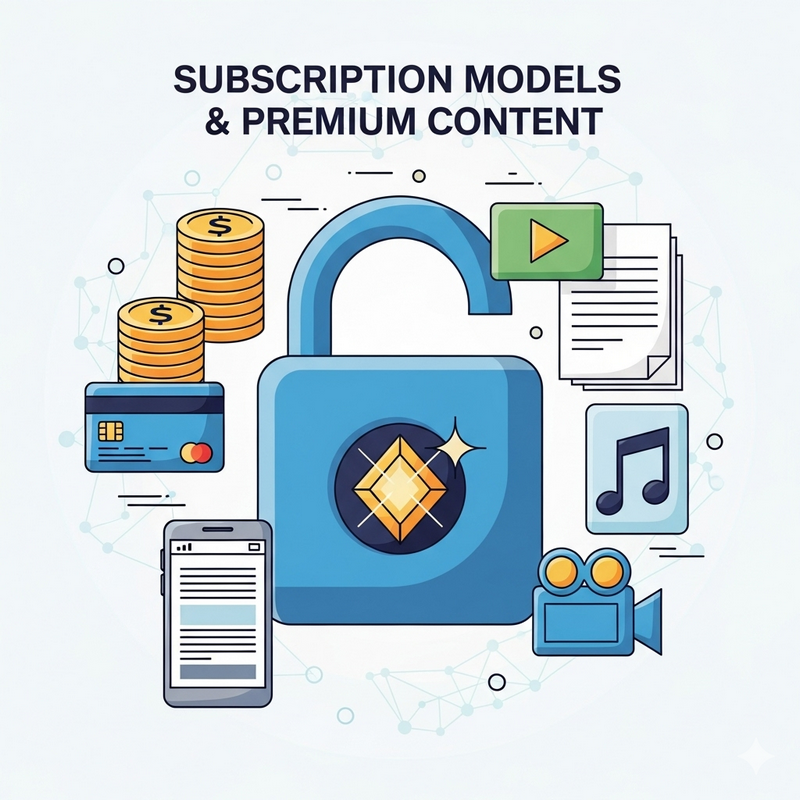
If you have a loyal and engaged audience, subscription models can be a sustainable way to monetize your blog.
You don’t have to rely solely on ads or one-time purchases. Instead, you can offer readers exclusive content.
This can be done through memberships, paid newsletters, or platforms like Patreon.
This model works well for bloggers who produce in-depth guides, insider tips, or niche-specific expertise. Readers are often willing to pay for content that saves them time. They appreciate content that helps them achieve results. Additionally, they seek unique value that can’t be found elsewhere.
Ways to Offer Premium Content:
- Paid Newsletters: Deliver exclusive strategies or insights via platforms like Substack or ConvertKit.
- Membership Sites: Offer gated access to premium resources, community forums, or VIP content.
- Patreon or Ko-fi: Enable fans to directly support your blog in exchange for perks or early access.
How Much Can You Charge for Premium Blog Content?
Pricing varies depending on your niche and audience size. Here’s a quick guide:
- Paid newsletters: $5–$15/month
- Membership sites: $10–$50/month for access to premium tools, templates, or courses
- Exclusive communities or masterminds: $50–$200/month for deeper engagement and mentorship
Pro Tip: Start with a low-cost entry-level subscription. This will attract subscribers. Then offer tiered pricing for advanced resources or exclusive perks.
You can create a recurring revenue stream by layering subscription models on top of your blog. This revenue stream grows as your community expands.
11. Host Webinars and Paid Workshops
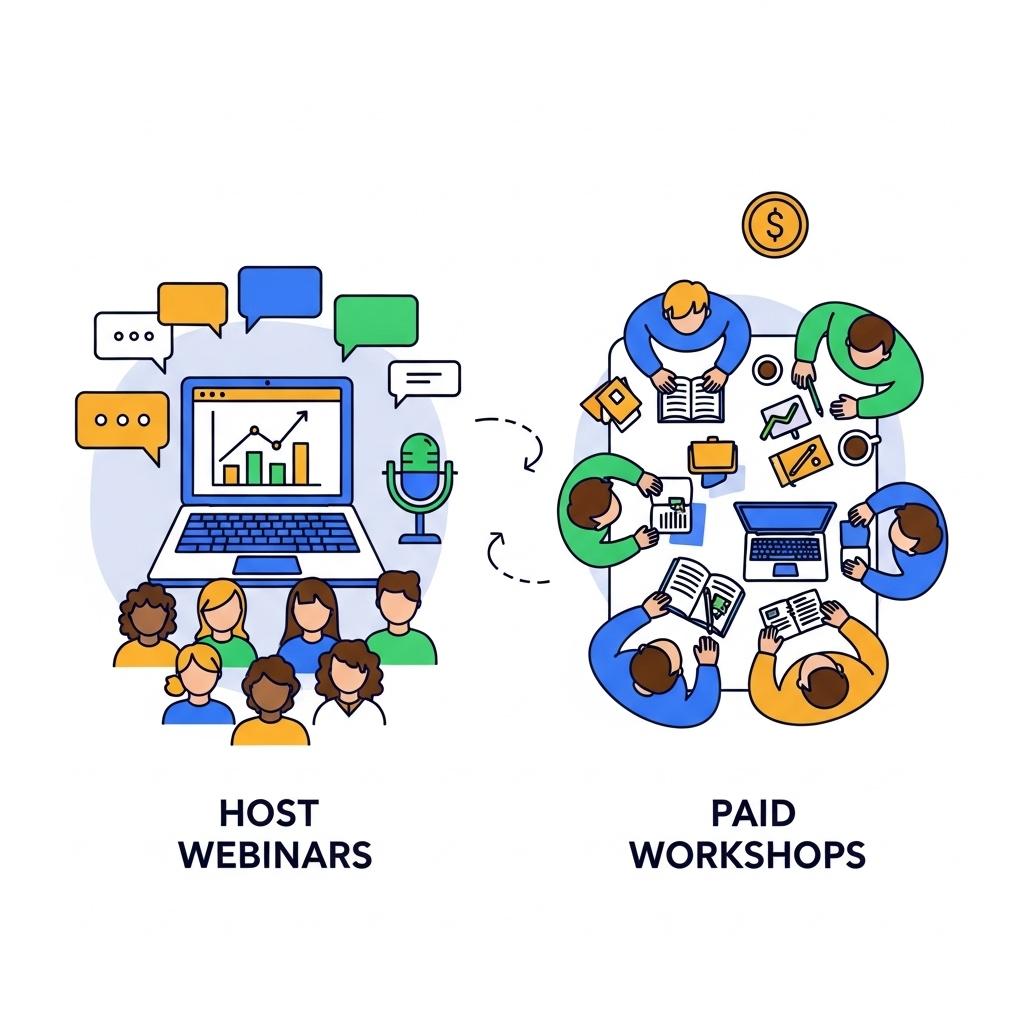
Hosting webinars and paid workshops is an excellent way to make money as a blogger. These activities also help you build trust with your audience.
Webinars allow you to connect with your readers in real-time. They let you share actionable strategies.
You can position yourself as an expert in your niche.
Platforms to Get Started:
- Zoom: Perfect for small, interactive sessions and one-on-one workshops.
- Crowdcast: Designed for creators who want an easy-to-use webinar platform with live chat features.
- Demio: A reliable solution for hosting professional webinars and automated replays.
How to Add Value and Upsell:
Start by delivering high-quality, actionable content during your session. Offer attendees exclusive resources like worksheets, templates, or recordings. Use the end of your session to upsell related products or services, such as:
- A premium online course
- A coaching package
- Access to a membership site
You can also bundle webinars with eBooks or tools for extra value.
Pro Tip: Start with free webinars to build trust, grow your email list, and showcase your expertise. Once you have an engaged audience, transition into paid workshops for more targeted training.
With minimal setup, webinars can become a high-conversion revenue stream that boosts your blog income while strengthening your authority.
12. Sell Your Blog or Offer Blog Flipping Services

If you’ve built a profitable, well-optimized blog, you can make money selling blogs.
You can even turn blog flipping into a full-time business.
Blog flipping involves buying, improving, and reselling blogs for a profit, much like flipping real estate—but in the digital world.
How to Value a Blog:
Blog valuation depends on factors like:
- Monthly Revenue potential: Most blogs sell for 20–40x their monthly profit.
- Traffic Quality: Niche authority and organic traffic sources add value.
- Domain Authority & SEO Health: Strong backlinks and ranking keywords increase buyer interest.
- Email List & Social Media: Established communities boost perceived value.
Platforms to Sell or Buy Blogs:
- Flippa: Best for beginners looking to sell smaller blogs and websites.
- Empire Flippers: A premium marketplace for higher-value blogs earning consistent revenue.
- Motion Invest: Great for mid-sized blogs with steady traffic.
Why Blog Flipping is Profitable:
Once you understand SEO, content strategy, and monetization, you can purchase under-performing blogs. You can then improve their traffic and earnings.
Finally, resell them at a profit. Even a single flip can generate thousands of dollars.
Pro Tip: Build a strong brand. Ensure consistent revenue streams. Create clear analytics reports before listing your blog. This approach will maximize its sale price.
Selling blogs or flipping them strategically is a lucrative exit strategy. It allows bloggers to cash out. They can also reinvest in other projects.
What You Need Before You Start Monetizing
Before you dive into the exciting world of blog monetization, it’s essential to build a strong foundation.
Many bloggers rush to put ads or affiliate links on their site. They do this without first ensuring their blog is optimized for growth. This often leads to disappointment.
Here are the must-have elements to set yourself up for success:

1. A Profitable Niche
Choosing the right niche is the first step to making money blogging. Focus on a topic you’re passionate about but also one with market demand. Niches like personal finance, health and wellness, travel, and tech are competitive but profitable. Use keyword research tools (like Semrush or Ahrefs) to validate your niche and uncover low-competition, high-traffic keywords.

2. A Self-Hosted Blog
A professional blog setup is non-negotiable if you want to earn money. Use a self-hosted WordPress blog (WordPress.org) with a reliable hosting provider to have full control over your content, design, and monetization options. Avoid free blogging platforms that limit growth potential.
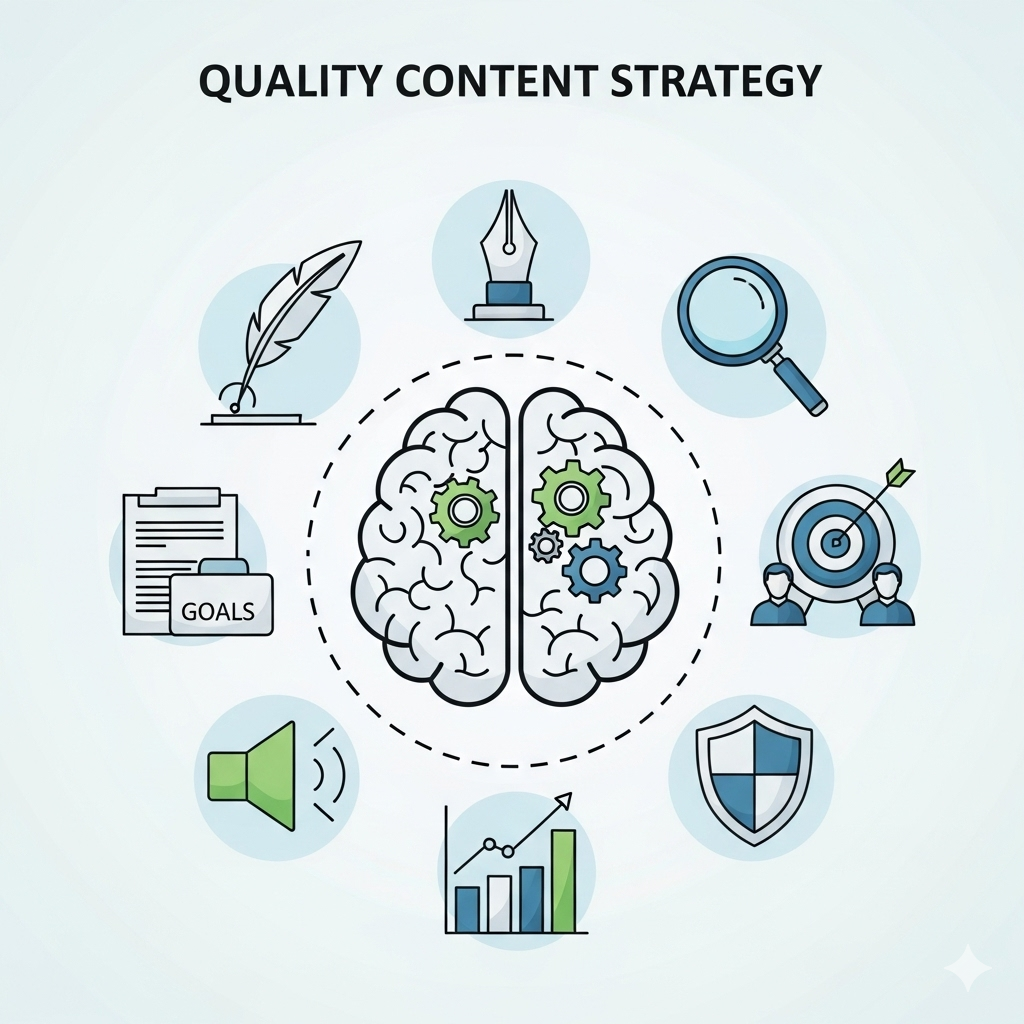
3. Quality Content Strategy
Before monetization, focus on publishing valuable, SEO-optimized blog posts. Your goal is to attract an audience that trusts your expertise. Create cornerstone articles, tutorials, and guides that answer your readers’ most common questions.

4. Growing Traffic Sources
Without consistent traffic, it’s nearly impossible to earn from a blog. Focus on driving traffic from multiple channels:
- Email Marketing: Build an email list early to nurture your readers and promote products directly.
- SEO: Optimize your blog posts for search engines to get free, long-term traffic.
- Social Media: Use platforms like Pinterest, Instagram, or LinkedIn to share your content.

5. Basic Blogging Tools
Investing in a few essential tools can speed up your growth:
- Keyword Research Tools: To find high-traffic keywords.
- Email Marketing Software: For building your list and automating campaigns.
- Analytics: Tools like Google Analytics and Google Search Console to track performance.
When these foundations are in place, your blog is ready to monetize effectively. Skipping this step can make earning money much harder in the long run.
Suggested Readings: On-Page SEO for Google Ranking | Blogging Resources | GeneratePress Review | Rank Math SEO Review
Tips to Grow Blog Traffic & Revenue Faster
If you want to monetize your blog successfully, traffic and audience engagement are key. Without consistent visitors, monetization strategies like ads, affiliate marketing, or product sales won’t perform well. Below are actionable tips to grow blog traffic and revenue faster in 2025:
1. SEO Optimization Strategies for 2025
SEO is still the most sustainable way to grow blog traffic. To rank higher on Google, focus on:
- E-E-A-T Content: Show expertise, authority, and trustworthiness in your niche.
- AI-Powered Keyword Research: Use tools like Ahrefs, Semrush, or SERPSTAT to identify long-tail keywords with low competition.
- Topic Clusters & Internal Linking: Organize content into silos for better indexing.
- Fast Loading & Core Web Vitals: Optimize images, use a CDN, and choose a lightweight theme like GeneratePress or Astra.
- Voice Search Optimization: Include conversational keywords to target AI-driven searches.
2. Use Pinterest, Instagram, and LinkedIn for Traffic
Social platforms can drive massive referral traffic to your blog when used strategically:
- Pinterest: Ideal for bloggers in lifestyle, travel, food, and design niches. Create pin-worthy graphics and link back to posts.
- Instagram: Build a personal brand, use reels, and promote lead magnets to grow your email list.
- LinkedIn: Perfect for B2B bloggers. Share industry insights and grow a professional audience.
Pro Tip: Schedule posts with tools like Tailwind or Buffer to stay consistent.
3. Build an Engaged Email List
Your email list is a long-term revenue engine. Social media algorithms change, but your list stays yours.
- Offer lead magnets (ebooks, checklists, templates) to encourage sign-ups.
- Send weekly newsletters with value-packed tips, not just promotions.
- Segment your audience to send personalized offers and boost conversions.
- Use tools like ConvertKit or MailerLite for automation.
4. Network with Other Bloggers
Networking accelerates your growth by exposing your blog to new audiences.
- Collaborate on guest posts and backlinks to boost SEO.
- Join Facebook groups and Slack communities to connect with bloggers in your niche.
- Attend blogging conferences or webinars to learn strategies and grow relationships.
5. What’s the Fastest Way to Make Money Blogging for Beginners?
If you’re starting fresh, the quickest way to earn is through:
- Freelance Services: Offer writing, design, or social media services using your blog as a portfolio.
- Affiliate Marketing: Recommend tools or products you use and earn commissions.
- Sponsored Content: Partner with brands once you have some traffic and niche authority.
- Digital Products: Create ebooks or templates that solve a problem for your audience.
The key takeaway: Focus on building trust and traffic first; monetization will follow naturally.
Common Blogging Mistakes to Avoid
Starting a blog is exciting, but many beginners make mistakes that slow their growth and earnings. Here are some common blogging mistakes to avoid:
- Unrealistic Expectations: Many new bloggers expect to make money overnight. The truth is, blogging is a long-term game. It takes months (sometimes years) of consistent effort to build traffic and trust. Tip: Set realistic goals. Aim to publish 2–3 posts a week. Focus on growing your email list. Learn SEO before expecting big income.
- Poor Niche Selection: Choosing a niche just because it’s trending or profitable can backfire. If you’re not passionate about the topic, you’ll lose motivation quickly. Tip: Pick a niche that balances your interests, audience demand, and earning potential. Use keyword tools to check if people are searching for content in your niche.
- Ignoring SEO and Branding: Without SEO, your blog won’t get organic traffic. Without branding, people won’t remember you. Tip: Learn basic SEO. This includes keywords, on-page optimization, and backlinks. Create a consistent brand identity with a unique logo, colors, and writing style.
- Relying on One Income Stream: Relying only on ads or affiliate marketing is risky. If one source fails, your income drops. Tip: Diversify your revenue by adding sponsored content, digital products, courses, and services to your monetization mix.
Frequently Asked Questions (FAQs)
How long before I make money blogging?
Most bloggers can start making money blogging within 6 to 12 months. They need to focus on creating high-quality content. Growing traffic is important. They must consistently apply proven monetization strategies.
Which monetization method pays fastest?
The fastest way to earn blogging income is by offering freelance services. Consulting or sponsored content is also fast. These methods don’t require high blog traffic to generate revenue.
Do I need a lot of traffic to earn?
No, you don’t need huge traffic to make money blogging. A small, targeted audience can bring solid income through affiliate marketing, digital products, or premium services.
Can I make money blogging part-time?
Yes, you can earn part-time blogging income by posting consistently. Choose profitable niches. Focus on one or two monetization methodsbefore scaling up.
Best niches for making money blogging in 2025?
Some of the best blogging niches for 2025 include personal finance, health and wellness, and AI tools. Other great options are tech tutorials, productivity, and evergreen lifestyle topics with steady demand.
Should I use ads or affiliate first?
Affiliate marketing is a better choice for beginners to maximize blogging income. This is because it pays more per conversion. Ads work best for high-traffic blogs.
How do I handle payments and invoices?
Use gateways like PayPal, Stripe, or Razorpay to manage blogging payments. Simplify invoicing with tools like FreshBooks or Wave for professional records.
Final words on Make money Blogging
Blogging is no longer just a passion project. It’s a powerful way to earn money. You can build influence and create a sustainable online business.
There are countless ways to monetize your blog. You can use affiliate marketing and sponsored posts. You might also consider selling products, offering services, and hosting webinars.
The key is to start with one method. Master it first. Afterward, expand into others as your traffic and audience grow.
Remember, success takes time. Focus on consistent content creation, SEO, and audience engagement to see real results.
Whether you want to earn passive income, build a personal brand, or create a full-time business, blogging offers unlimited opportunities.
Your journey to a profitable blog starts today!






